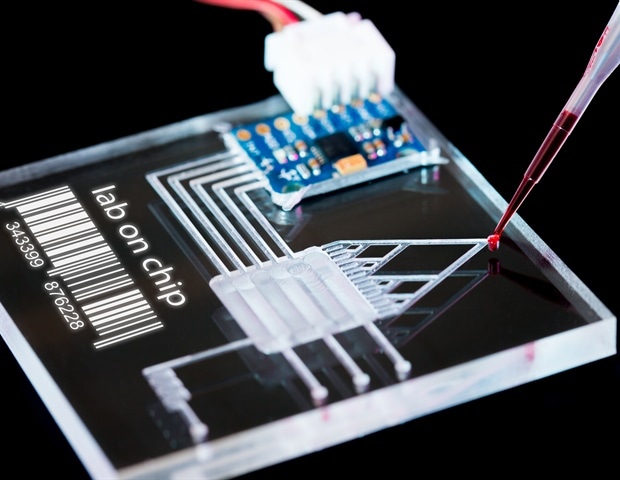Extracellular vesicles (EVs) – nano-sized vesicles are launched naturally from cells that can’t replicate. Rising proof suggests the essential position of EVs in intercellular communication by bioactive molecules switch from donor to recipient cells. These molecules embody – nucleic acids, proteins, and lipids.
Background
EVs are instrumental in physiological and pathological processes, and so they have additionally been implicated in viral transmission. It was discovered that enteroviruses enclosed in EVs display better effectivity in infecting host cells than free viral particles.
The first route of entry of the extreme acute respiratory syndrome coronavirus 2 (SARS-CoV-2) into host cells happens when the viral spike (S) protein interacts with the host-cell surface receptor angiotensin-converting enzyme 2 (ACE2). Since ACE2 expression is extra distinguished in the human airways and intestinal epithelial cells, these cells have the next predilection for SARS-CoV-2 invasion.
Upon launch from contaminated cells, furin cleaves the full-length S protein precursor into S1 and S2. After S2 binds with ACE2, S2 is additional cleaved at the S2’ web site to permit for the viral entry into the host cells.
Soluble ACE2 (sACE2), produced after proteolytic cleavage, might inhibit SARS-CoV-2 infection. The utilization of high-dosage human recombinant sACE2 utilizing an in vitro mannequin has been examined for this function.
Current experiences have advised a twin position of sACE2 in SARS-CoV-2 infection, with respect to the viral inhibition and its mediation of SARS-CoV-2 infection at the physiological vary.
A brand new letter to the editor printed in the Journal of Extracellular Vesicles explored whether surface ACE2 carried by EVs can facilitate the entry of SARS-CoV-2 into host cells.
For this research, 293T and Vero E6 cell strains had been obtained from American Kind Tradition Assortment. 293T cell overexpressing ACE2 was ready; 5 × 105 293T cells had been transfected with 1 μg ACE2-expressing plasmid and Lipofectamine 2000. 293T transfected with empty vector fashioned the management (CTL). EVs had been collected from a conditioned medium.
Findings
EVs containing ACE2 improve infection effectivity of SARS-CoV-2 stay virus
EVs containing ACE2 had been obtained by culturing 293T cells with ACE2 overexpression (ACE2-OE) in EV-depleted fetal bovine serum (FBS). Full-length transmembrane ACE2 was present in the cells; two further cleaved types of ACE2 had been noticed in the tradition medium.
Glycosylated types of transmembrane protease serine 2 and 4 (TMPRSS2 and TMPRSS4)––that cleave the S2 subunits––had been present in whole cell lysates, whereas solely the predicted sizes of these enzymes had been current in EVs.
Additional examination of EVs from each cells depicted the launch of an equal quantity of particles and the exhibited related mode dimension – by electron microscopy. On making use of the multicycle progress assay, infectious virions had been generated almost six hours post-infection; these progenies might infect different cells. After that, EVs replenished post-infection would allow subsequent rounds of mobile infestations.
Of word, the Vero E6-cell infectivity by SARS-CoV-2 stay virus (blended with ACE2-OE-EV) escalated 24 hours post-infection, which corresponded to the viral load. Regardless of the elevated quantity of EV, CTL-EVs didn’t alter the infection. In the meantime, a big distinction in infectivity of the Vero E6 cells by SARS-CoV-2 with or with out EVs couldn’t be recognized one hour post-infection.
Inhibition of EVs uptake diminishes infectious effectivity of the SARS-CoV-2 stay virus
Earlier findings delineate cells assimilate EVs by endocytic pathways. To verify whether EVs facilitate SARS-CoV-2 infectivity enhancement, inhibitory medicine that concentrate on varied EV-uptake routes had been examined on Vero E6 cells.
Particularly, EIPA (5-[N-ethyl-N-isopropyl] amiloride) impedes micropinocytosis; filipin prevents lipid raft-mediated endocytosis; Cytochalasin D permits depolymerization of the actin cytoskeleton, and Bafilomycin A1 (BafA1) curtails vacuolar H+ ATPase. It was famous that Vero E6 cells obstructed EV uptake by as much as 60% after remedy with both of these inhibitors.
The viral infectivity was considerably enhanced in mock remedy by ACE2-OE-EV however not CTL-EV, as proven through RT-qPCR evaluation. This outcome indicated that ACE2 that had been expressed on EVs enabled SARS-CoV-2 entry.
Cytochalasin D remedy decreased infectivity in CTL-EV and ACE2-OE-EV teams; the impact was dose-dependent. Moreover, Bafilomycin A1 (BafA1) considerably decreased SARS-CoV-2 infectivity that was induced by ACE2-OE-EV.
Conclusion
The outcomes of this research underscored that ACE2-enriched EVs harbor an elevated effectivity in facilitating SARS-CoV-2 viral entry than the management EVs with insignificant ACE2. This enhanced infectivity might be curtailed by inhibitors that compete with the completely different EV-entry routes.
Furthermore, EVs can additionally facilitate the direct unfold of SARS-CoV-2 elements. Moreover, SARS-CoV-2 contaminated cells might generate EVs containing the viral elements and should act as automobiles for direct supply of the viral particles resulting in an augmented infection in the microenvironment.







